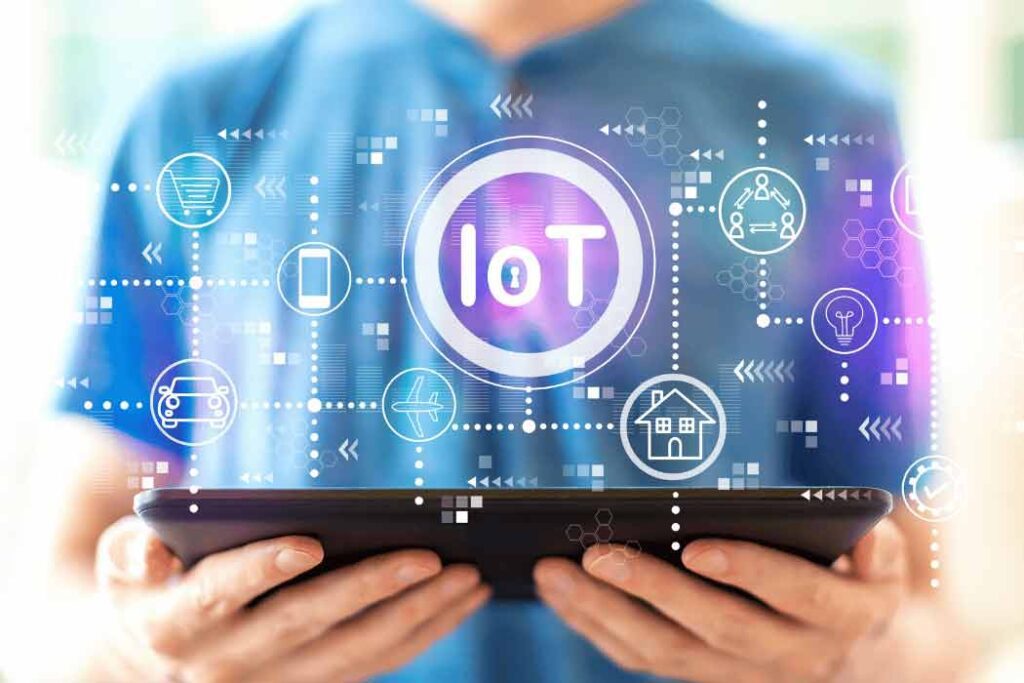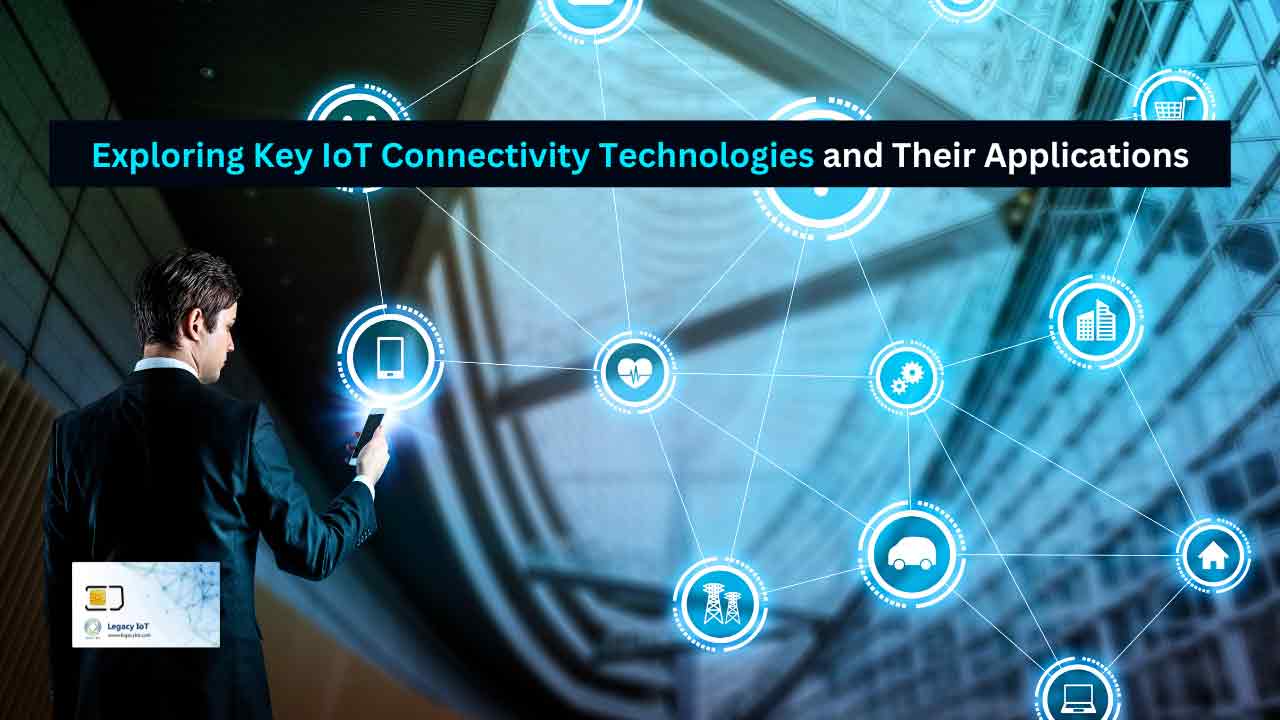The landscape of the Internet of Things (IoT) thrives on connectivity, akin to how a faucet relies on a waterline or a lamp on an electrical outlet. Within the expansive IoT ecosystem, device functionality hinges on seamless interconnection with other devices and technologies. Fortunately, an array of connectivity options exists, each catering to specific needs concerning power consumption, range, and bandwidth.

Let’s delve into the realm of eight prevalent IoT connectivity technologies, dissecting their characteristics and prevalent IoT applications.
1. Cellular Connectivity
Enhancing Mobility and Reliability
Cellular networks, ubiquitous in modern life, serve as the backbone of numerous devices, including smartphones, tablets, and smartwatches. Leveraging existing mobile network infrastructure, cellular connectivity facilitates seamless integration into IoT projects without necessitating the establishment of a new network.
Common Applications:
– Point of Sale Systems and Kiosks: Cellular connectivity eliminates the reliance on Wi-Fi or wired connections, enabling operations in areas with unreliable or inaccessible Wi-Fi.
– Delivery Tracking: Real-time tracking of deliveries ensures precise arrival estimates, crucial for optimizing logistics and supply chain management.
2. High Data Rate Cellular (3G/4G/LTE/5G)
Empowering Data-Intensive IoT Applications
High data rate cellular connectivity offers impressive Mbps speeds, making it ideal for data-heavy IoT applications and real-time video streaming. As 5G deployment progresses, the concept of “massive IoT” will materialize, connecting a multitude of devices across vast areas.
Key Applications:
– Fleet Management: Real-time fleet tracking facilitates informed decision-making, optimizing routes, fuel consumption, and operational efficiency.
– Health Monitoring: Wearable health monitors transmit critical data seamlessly to healthcare facilities, ensuring continuous monitoring regardless of the wearer’s location.
3. Ethernet
Dependable Wired Connectivity
Ethernet, a prevalent wired connection option, offers a cost-effective and reliable solution for IoT device connectivity, particularly when existing infrastructure is available. Low latency and robustness characterize Ethernet connections, making them suitable for stationary devices.
Notable Applications:
– Security Cameras: Ethernet connections provide a reliable means of streaming real-time footage from security cameras without signal disruptions.
– Game Systems: Gamers favor Ethernet connections for minimal lag and enhanced reliability during gameplay.
4. Wi-Fi
Ubiquitous Wireless Connectivity
Wi-Fi, widely used in home and office environments, provides a secure and cost-effective means of connectivity. While its reliability and range limitations are acknowledged, Wi-Fi remains a popular choice for localized IoT ecosystems.
Common Use Cases:
– Smart Gadgets: Various smart devices, such as TVs and lightbulbs, seamlessly integrate with existing Wi-Fi networks for streamlined operation to make IoT smart homes or offices.
– Digital Signage: Wi-Fi connectivity facilitates the deployment of digital signage in commercial spaces, leveraging existing network infrastructure for cost-effective implementation.
5. Bluetooth
Compact and Portable Connectivity
Bluetooth, prevalent in consumer goods, serves as a viable option for small, battery-powered devices. Despite its limited range, Bluetooth offers reliability and portability, making it suitable for various applications.
Applications Include:
– Smartwatches and Fitness Trackers: Bluetooth connectivity enables seamless data transfer between wearable devices and smartphones, enhancing user experience and data accessibility.
– Sensors in Compact Environments: Bluetooth-enabled sensors are ideal for monitoring environmental factors in small business or home settings.
6. Mesh Protocols (ZigBee, Z-Wave, Thread)
Decentralized Connectivity Solutions
Mesh protocols like ZigBee, Z-Wave, and Thread excel in medium-range settings, facilitating communication between multiple devices within a decentralized network. This resilience to device failures enhances reliability in smart home automation and environmental monitoring.
Prominent Applications:
– Home Automation: Mesh networks enable seamless automation of smart devices, enhancing convenience and efficiency within smart homes.
– Environmental Monitoring: Mesh networks find utility in agricultural and environmental sectors, facilitating data collection and analysis for improved resource management.
Want to learn about IoT in agriculture?
7. LPWANs
Optimized for Low-Power Efficiency
LPWANs, including SigFox, LoRaWAN, and NB-IoT, cater to expansive IoT projects with small, infrequent data transfers over wide areas. With a focus on low-power consumption, LPWANs ensure prolonged device battery life, making them ideal for long-term deployments.
Use Cases:
– Smart Parking Solutions: LPWANs enable real-time monitoring of parking spaces, optimizing resource allocation and enhancing user experience.
– Shared Rental Vehicles: LPWAN-enabled sensors facilitate efficient tracking of shared vehicles, enhancing fleet management and customer satisfaction.
8. RFID
Streamlining Logistics and Retail Operations
RFID technology enables efficient data transfer between tagged items and nearby readers, revolutionizing inventory management and asset tracking. With applications in logistics and retail, RFID enhances operational efficiency and inventory visibility.
Applications:
– Smart Shelves: RFID-enabled smart shelves automate inventory tracking, ensuring accurate stock management and minimizing manual efforts.
– Smart Mirrors: RFID-equipped smart mirrors enhance the retail experience by providing personalized recommendations and inventory information in fitting rooms.
In conclusion, the diverse landscape of IoT connectivity technologies offers tailored solutions for various applications, ranging from high-speed data transmission to low-power, wide-area deployments. Understanding the nuances of each technology empowers businesses to optimize their IoT infrastructure for enhanced efficiency and functionality.





